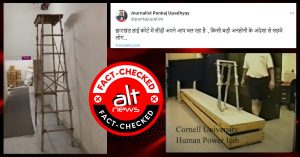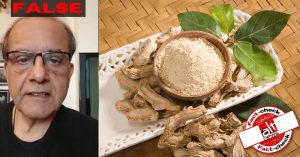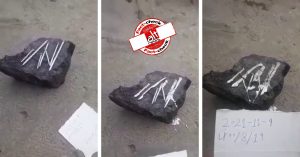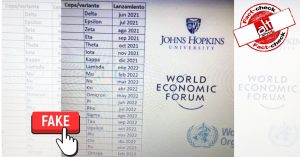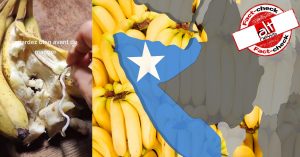On October 25th, 2017, a pair of quacks running a hospital were held on charges of medical negligence after a woman died in their facility. Later, on November 15th, 2017, a 16 year old girl died following an injection administered by alleged quack in HD Kote Taluka in Karnataka. As of now, this practice of quackery, where non-medically trained practitioners, practicing modern medicine- is illegitimate and a punishable offence. However, with the introduction of the National Medical Commission Bill (NMC, 2017), practitioners from Homeopathy and Indian medical systems such as Ayurveda, Siddha, Yoga and Unani (AYUSH practitioners) could gain such legitimacy via new policies proposed through the NMC. 2017 NMC bill has a provision for a bridge course to enable AYUSH practitioners to practise modern allopathic medicine in a limited way specifically in rural areas, where there are reduced number of medical practitioners. This article explores how this provision in the 2017 NMC bill not only puts a large majority of rural India at health risk but also provides an opportunity to AYUSH practitioners to become a modern medicine practitioner using a ‘short cut’.
AltNews studied the NMC, 2017 bill to access the implications of the clause 49 that actualised a crossover between modern medicine practices and practices such as homeopathy and Ayurveda conducted by an “AYUSH Practitioner”.
The clause 49 provides for joint sittings of the Commission, Central Councils of Homeopathy and Indian Medicine to enhance interface between their respective systems of medicine. Such meeting shall be held at least once a year. The joint sitting may reside on approving educational modules to develop bridges across the various systems of medicine and promote medical pluralism. – NMC, 2017
In particular clause 49 (4) suggests …a joint sitting… to decide on approving specific bridge course that may be introduced for the practitioners of Homeopathy and of Indian systems of Medicine to enable them to prescribe such modern medicines at such level as may be prescribed.
Under the National Rural Health Commission (NRHM), AYUSH practitioners provide services for essential family planning counselling, post-partum, paediatric and obstetric services such as Skilled Birth Attendants (SBA).
However, if clause 49 of the NMC bill were to be ratified by the Parliament, such “AYUSH Practitioners” will be able to prescribe modern medicine of the allopathic category by studying a short bridging course following their homeopathy or an Indian medical degree. Despite the fact that the specific details of this bridge course haven’t been provided in the current bill, discussion on the development of such a course have been on the table since 2007 as per a press release by the Ministry of Health and Welfare and; later, envisaged in a 2015 meeting convened by the Secretary, Ministry of Health and Family Welfare, Govt. of India.
National Senior Vice President IMA Dr Rajendra Airan, raised concerns over this bill that is seeking to replace MCI (Medical Council of India) with a new body to ostensibly benefit the medical profession. While Dr Airan suggests it is making way for diminished state regulation of private medical colleges, decreased representation of all 29 states and of universities and medical education in the NMC, allowing foreign graduates to practice in India without sufficient screening tests while introducing a licentiate exam for domestic medical graduates, reduced democracy in NMC memberships with the inclusion of bureaucrats and non-medical government administrators as non-elected members.
More importantly, as an immediate health concern, Dr. Airan also considered crosspathy as a problematic clause in the bill.
Alt News spoke with a number of modern medical doctors in India, specialising in the areas most responsible for mortality and serious illnesses such as endocrinology, cardiovascular diseases and infectious ailments to get their opinions on the provision of crosspathy.
Insights from Indian modern medicine practitioners:
“AYUSH therapies such as homeopathy is symptom based diagnosis while modern medicine is evidence based.” Dr. Hiten Kareliya
While speaking to Dr. Om Lakhani, an endocrinologist in Zydus hospital, Ahmedabad, he suggested how the government is trying to bandage the problem of shortage of rural doctors and not finding a solution to the problem. Moreover, he suggested how a democratic and equal representation of modern medicine doctors in the new medical association is required so such non-scientifically validated practices of ‘crosspathy’ are not actualised.
While, Dr. Anand Ahuja, a cardiovascular specialist perceived it as discriminatory towards those living in the rural areas, where to overcome the increased demand of doctors against its ameliorated supply, these anti-rural methods are being pushed. Moreover, Dr. Ahuja raised concerns about those seeking AYUSH treatments that may not be eligible for insurance claims. As discussed, medical insurance providers only provide claim to those seeking treatments from an evidence based practice. Even stem cell therapy, which is based on a scientific principle but not always a guaranteed success is excluded from such claims. Thirdly, Dr. Ahuja perceived that passing such bills can dilute the reputation of Indian doctors overseas. Since a large majority of doctors practicing modern medicine are based in the western countries, diluting the standard of medical practitioners by introducing a crossover of AYUSH and modern medicines can be detrimental for Indian doctors in the West and also for those seeking overseas medical experience.
While Dr. Ahuja didn’t comment on the extent of competency of homeopathic or Ayurveda principles of treatment, he stated, “The bridge course won’t be good enough to bridge the gap between the principles of modern medicine and other therapies, which is so wide apart. No course can possibly be sufficient to make anyone trained in one stream good enough to practise the other.” Furthermore, he claimed that the AYUSH practitioners are trained completely differently when it comes to pharmacology and can make life threatening mistakes if allowed to prescribe medications. Certain health risks highlighted during our conversation were the prescription of Beta blockers and ACE inhibitors, some of the most common prescription in the cardiovascular area- overdose or underdose of which, can cause serious problems affecting blood pressure and heart health.
As infectious diseases such as TB are one of the major causes of mortality in India, we discussed with Dr. Hiten Kareliya, an infectious disease specialist at Prime Infection Care, Vadodara, to discuss the implications of these practitioners prescribing anti-biotics. He raised concerns about over or under treatment with antibiotics that can introduce anti-biotic resistant strains of bacteria in the communities and hospital settings that will then fail to respond of other forms of antibiotic treatments. He also raised similar issues around training of AYUSH practitioners and modern doctors that apply completely different methods to check, diagnose and investigate patients.
Important issues can arise especially during infectious complications such as cerebral malaria, meningitis, HIV, pneumonia and sepsis where doctors decide on which tertiary care is required at its earliest- something that the AYUSH practitioners would not be able to refer to.
Also, Dr. Kareliya was concerned about their lack of knowledge in modern pharmacology and its implications on dosage and side effects. “AYUSH therapies such as homeopathy is symptom based diagnosis while modern medicine is evidence based”. If poorly treated, such patients could be carriers of diseases such as typhoid and ameobiosis that could infect the larger population.
Lastly, in cases such as TB, HIV and malignant tumours, prognosis and counselling is crucial. If these practitioners are not aware of drug pharmacodynamics and drug adherence, they will not be able to provide proper prognosis. In his opinion, Dr. Kareliya suggested the bridge course should be 2-3 years with internship in a public or corporate hospital to be eligible for prescribing modern medicine.
History and principles of a traditional medical practice:
One particular department of AYUSH which is discussed below, i.e. homeopathy, which is, in some cases, successfully used to treat diseases and a comparison against the modern medical practices evidently suggests how different its principles and mechanism of action can be.
In the 17th century, Samuel Christian Hahnemann, a German physician unable to find answers with the limited understanding of modern medicine as it existed then, invented Homeopathy. This invention was before the systematic pharmacological study of drug safety and efficacy existed, before the knowledge of anatomy and physiology in its present form, microbiology and the germ theory of disease, before the invention of general anaesthesia (chloroform was discovered in 1831) or aseptic techniques and their uses in surgery.
After multiple failed experiments, he stumbled upon quinine containing cinchona tree bark discovered before 1570s as a muscle relaxant. He later used it to treat malaria and developed malaria like symptoms, oblivious to the other side effects and contraindications of this drug he developed the first law of homeopathy.
- The Law of Similia Similibus Curentur (Let likes be cured by likes)
Also called the Law of Similitude: drugs causing symptoms that mimic a specific disease can be used to treat diseases that causes the same symptoms.
2. The Law of Single Remedy states that a prescription shouldn’t be given of more than one remedy at one point of time. If that doesn’t work, one should move on to the next remedy. If multiple treatments are given at the same time, it becomes difficult to conclude which one treated the condition.
3. The Law of Minimum Dose states that one should take the smallest dose to nudge one’s vital force to start the healing process. Hahnemann believed that healing should be “rapid, gently and permanent.” To use too much of a remedy frequently causes an aggravation of symptoms before any improvement is seen, thereby putting the individual off the modality
4. The Law of Direction of Cure states that If a disease is left untreated it moves in the opposite direction
5. The Law of Infinitesimal Doses
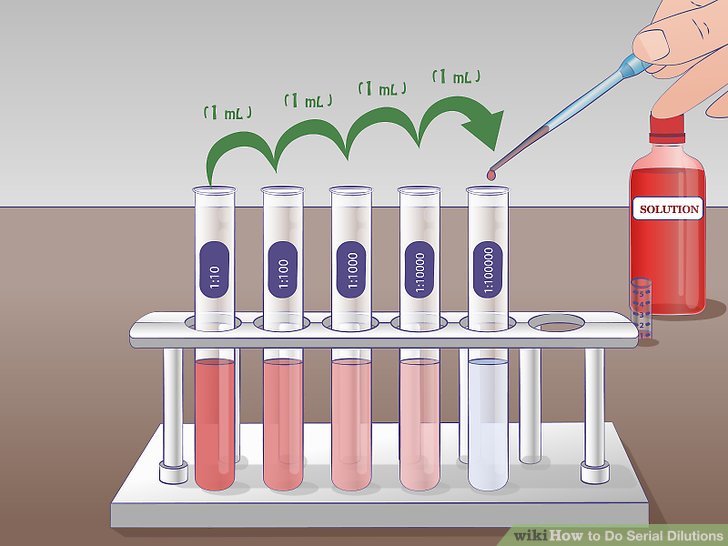
Under this law, homeopathy claims that when drugs such as an extract from the chinchona tree bark is diluted in water or alcohol, they increase their therapeutic potential. This is conducted by a serial dilution process such that a 1:100 dilution, i.e. one mL of drug per 100 mL of water or alcohol is repeated from 6 to 30 times to produce the most potent drug. In between each such dilution process, the liquid is agitated violently- a process that claims to activate the drug properties.
By this law, the minimum amount of potent homeopathy drug in the diluted liquid will be 1:100 ration repeated 6 times that will yield a maximum drug content with the ratio of 1:1000000000000
This means that a batch of 10,00,00,00,00 Litres of drug will contain only 1 mL of the actual drug compound, while the rest will be either water or alcohol.
Treatment effect and placebo theory
This diluted liquid, mostly water or alcohol is poured over small glucose balls that are to be consumed several times a day. A practice of validation through repetition of 4-5 doses a day, that may induce a placebo like effect- something that may be holding the value of homeopathy till this date. Several highly reputable scientific journals such as the list below have published studies that confirm time and again that the homeopathy method of treatment may work as placebo and there may not be any scientific basis for it.
- Shang, Aijing, et al. “Are the clinical effects of homeopathy placebo effects? Comparative study of placebo-controlled trials of homeopathy and allopathy.” The Lancet 366.9487 (2005): 726-732.
Conclusion: Biases are present in placebo-controlled trials of both homeopathy and conventional medicine. When account was taken for these biases in the analysis, there was weak evidence for a specific effect of homoeopathic remedies, but strong evidence for specific effects of conventional interventions. This finding is compatible with the notion that the clinical effects of homeopathy are placebo effects.
- Nuhn, Tobias, Rainer Lüdtke, and Max Geraedts. “Placebo effect sizes in homeopathic compared to conventional drugs–a systematic review of randomised controlled trials.” Homeopathy 99.1 (2010): 76-82.
Conclusion: Placebo effects in RCTs on classical homeopathy did not appear to be larger than placebo effects in conventional medicine.
Also, the Australian NHMRC, Australian National Health and Medical Research Council, after analysing over 1800 scientific papers has concluded that homeopathy “relies on super-diluted substances” and has given the final verdict on the ineffectiveness of homeopathy as a treatment based on evidence based practice in a variety of clinical conditions. In essence, it concluded that there is no scientific basis for homeopathy and no quality evidence of its efficacy.
Treating symptoms not diseases
Also, Homeopathy also has the theory of disease with three miasms, which are responsible for all human diseases and the treatments should be directed at treating these problematic miasms as a root cause:
- SYCOSIS: conditions worsened by damp weather and the sea.
- SYPHILIS: diseases of the nervous system such as a range of psychological illnesses such as alcoholism, depression, loss of sensations, ulcerations; the blood and skeletal disorders like heart conditions etc
- PSORA: diseases of a chronic nature, all skin diseases, mental illness other than syphilitic ones, allergies, varicose veins, haemorrhoids, most dysfunctional diseases of organs and systems, etc.
Hence, each symptom is addressed instead of looking at the root cause of treatment- which the homeopaths claim to treat. e.g. Pain is a symptom of many disorders from cancer, diabetes and musculoskeletal disorders to injury and trauma. Treating the pain will not address the diabetes in a diabetic neuropathy patient.
Conclusion
Understanding the basic principles of homeopathy in particular, the law of infinitesimal doses, it is clear that the medicine does not contain enough drug to treat any disorder, i.e. it either consists largely of water or alcohol poured over sugar balls. While thoroughly researched evidence based pharmacology suggests the optimum drug dosage in the body is a major contributing factor for drug efficacy. Therefore, according to the modern scientific explanation, these homeopathic drugs simply should not work based on a mechanism. Also, the inconsistent homeopathic efficacy in some ailments, as we observe in some patients, can only be attributed to its placebo effect.
In India, the Ministry of AYUSH has a Central council for research in homeopathy (CCRH), a fully funded government body to conduct research in homeopathy- a research area that has been increasingly pushed into mainstream medical science since the ministry was formed in 2014.
While, we are not suggesting that all practices of AYUSH are quackery and that there is little scientific evidence associated with them; but, as a matter of fact, they are completely different to the modern medical practices and hence cannot be mixed together. Most importantly, these practices may work in instances where modern medicine do not have all the answers but they have to be looked as a complementary treatment, in addition to allopathy, and not in place of it.
Independent journalism that speaks truth to power and is free of corporate and political control is possible only when people start contributing towards the same. Please consider donating towards this endeavour to fight fake news and misinformation.
